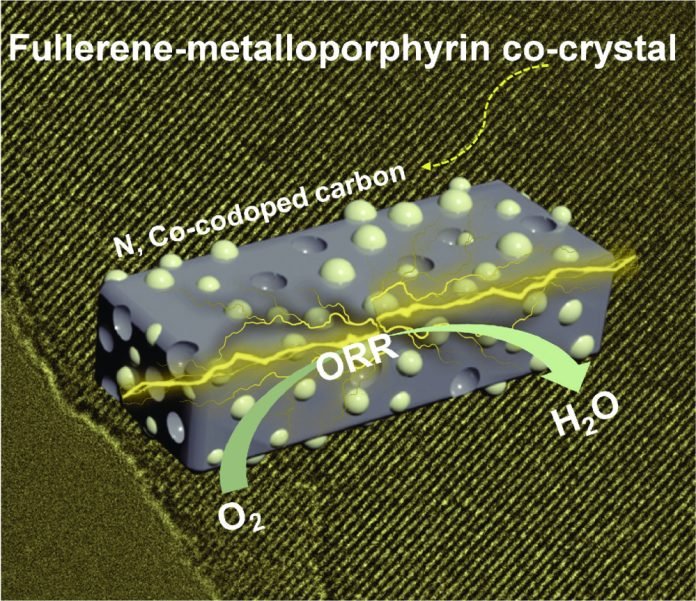
Zinc-air batteries stand out as a potent and cost-effective solution for both small-scale electronics and larger applications such as electric vehicles and energy storage.
However, their widespread use has been limited due to challenges associated with oxygen activation, which adversely impacts battery performance.
Recent findings published in Carbon Future by Tsinghua University Press on January 19 shed light on a promising solution. Researchers, led by Professor Fang-Fang Li from Huazhong University of Science and Technology, explored the use of fullerene-metalloporphyrin derived carbon materials as catalysts to improve the efficiency and stability of zinc-air batteries: “The sluggish kinetic characteristics caused by the difficulty in oxygen activation, oxygen to oxygen bond cleavage, and oxide removal of oxygen reduction in zinc-air batteries have limited their application in the commercial field.” To tackle these obstacles, the research team explored the potential of carbon-based non-noble metallic catalysts, citing their large surface areas, high electrical conductivity, exceptional mechanical properties, and stability in electrochemical environments.
The team created four versions of Co, N co-doped carbons using the fullerene-metalloporphyrin cocrystal as a precursor. The liquid-liquid interface precipitation method, resulting in fullerene-metalloporphyrin cocrystals, increased defects, ultimately enhancing the performance of the oxygen reduction reaction. Structural analysis, including scanning electron microscopy, X-ray diffraction, and Raman spectroscopy, confirmed the effectiveness of the liquid-liquid interface precipitation method in improving the catalyst’s performance.
The researchers then constructed a homemade zinc-air battery using the Co, N codoped carbons as the cathode, demonstrating exceptional long-term stability and robust electrocatalytic performance. This combination of high power density and extended stability positions fullerene-metalloporphyrin cocrystal derived Co, N codoped carbons as a highly promising catalyst for practical applications of zinc-air batteries.
Contributors from Huazhong University of Science and Technology and the University of Central Florida collaborated on this study that marks a significant step forward in overcoming key challenges associated with zinc-air batteries.
This groundbreaking research is supported by the National Natural Science Foundation of China.






